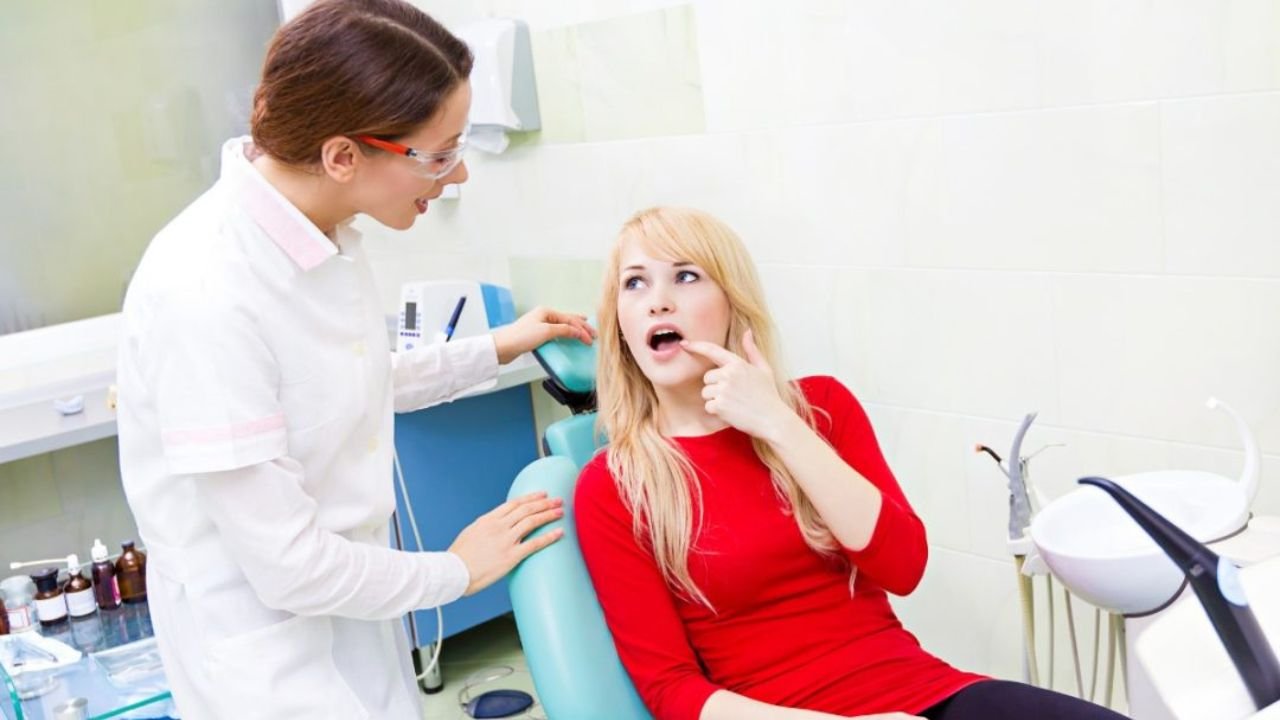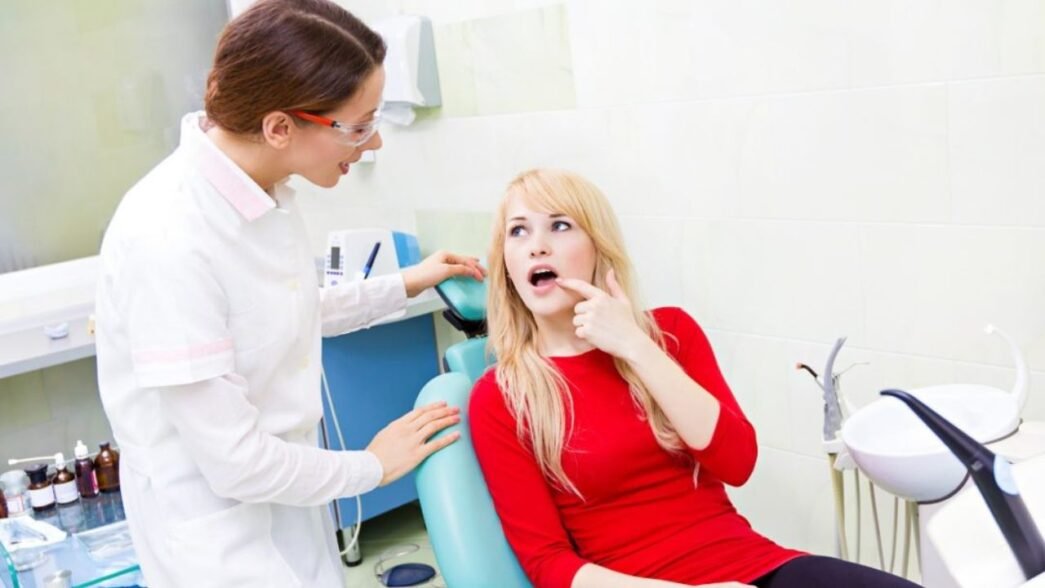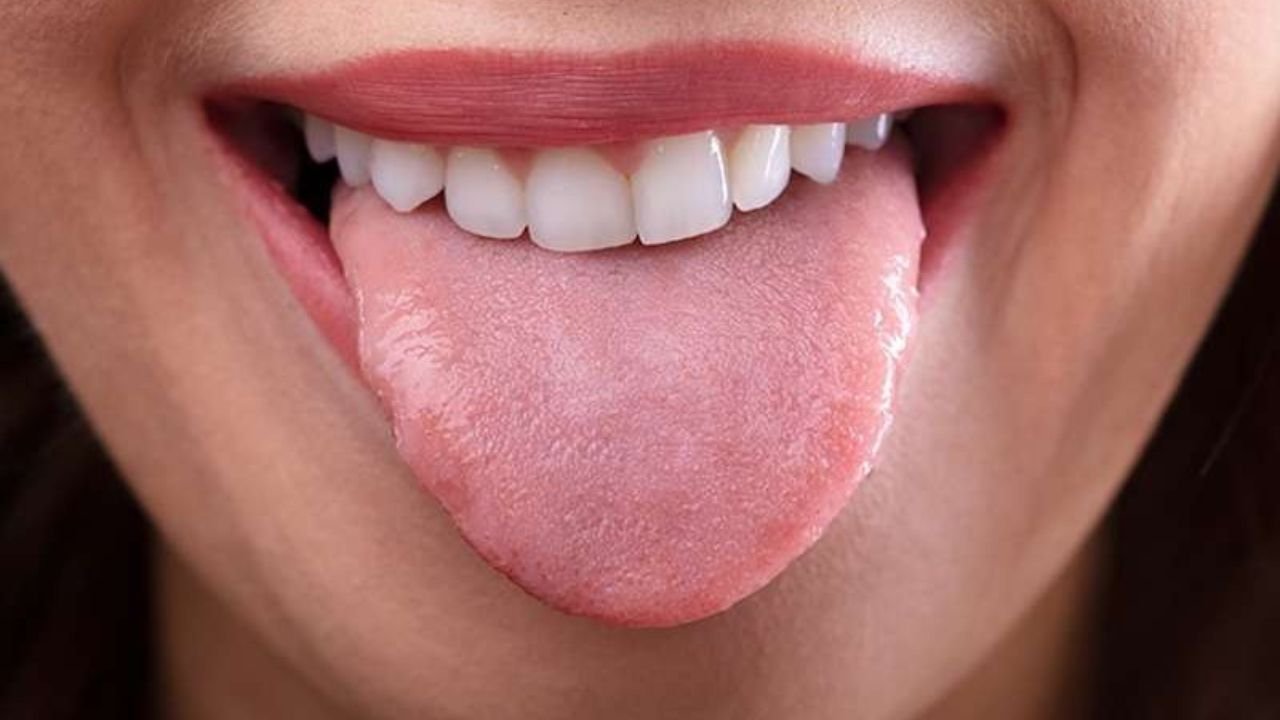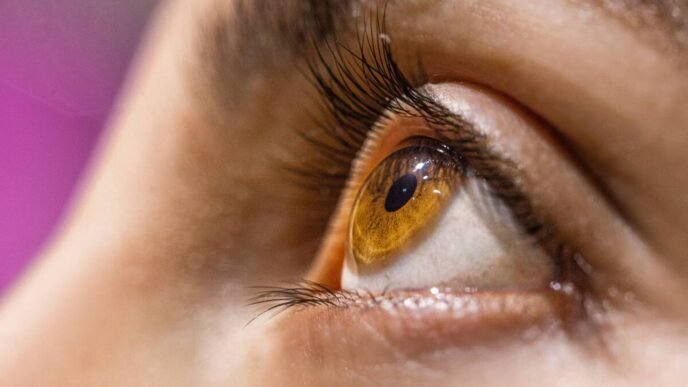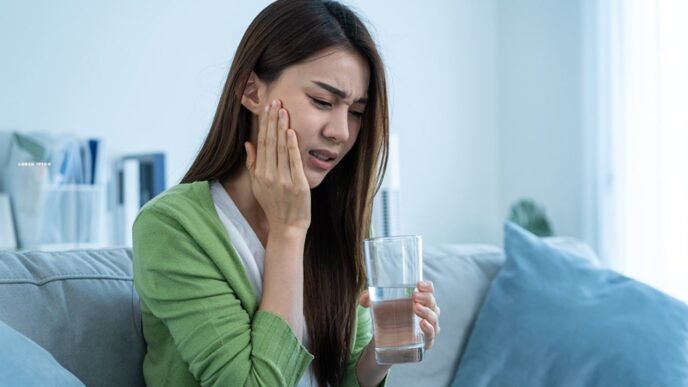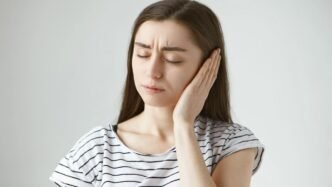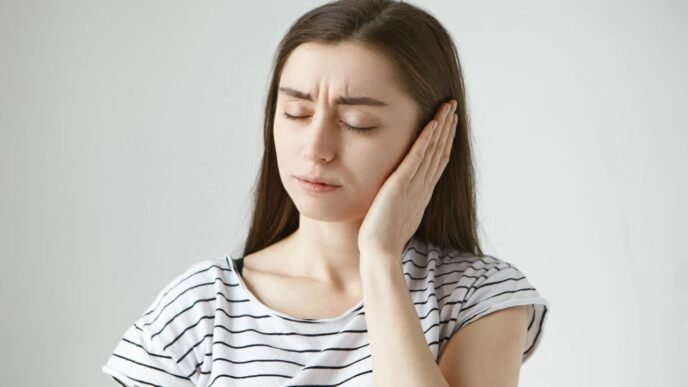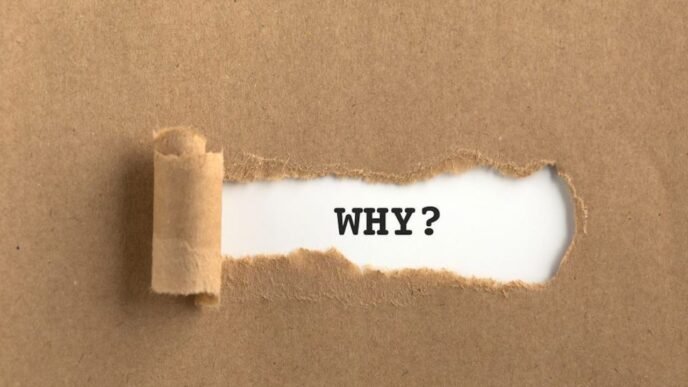Why do my gums hurt in one spot? It’s a question many of us have asked, often in the quiet discomfort of our own bathrooms. Experiencing pain in a specific area of your gums can be unsettling, making everyday activities like eating and brushing a challenge. This common concern can stem from various underlying issues such as infections, abscesses, or just plain old inflammation. By understanding why your gums hurt in one spot, you can take the necessary steps to alleviate the pain and start smiling confidently again. Dive into our detailed exploration of the top 10 causes to get the clarity and solutions you need.
- 01. Understanding Gum Pain
- 02. Common Causes of Localized Gum Pain
- 03. Symptoms to Watch For
- 04. When to See a Dentist
- 05. Professional Dental Treatments
- 06. Preventive Measures for Healthy Gums
- 07. Frequently Asked Questions
- 08. Top 5 Amazon Products for Managing and Preventing Gum Pain
- 09. Conclusion - Why Do My Gums Hurt in One Spot
01. Understanding Gum Pain
Pain in your gums, especially when it’s localized to one spot, can be uncomfortable and concerning. By unraveling the reasons behind this discomfort, you can effectively address the issue and find relief. Understanding gum pain involves recognizing the common causes that trigger this sensation and learning how to pinpoint the specific spot of pain for targeted treatment.
A. Common Causes
- Gingivitis and Gum Disease: One of the most prevalent reasons for gum pain is gum disease, such as gingivitis. Poor oral hygiene, plaque buildup, and bacterial infections can lead to inflammation, bleeding, and soreness in the gums. Proper dental care and regular check-ups with your dentist can help prevent and manage gum disease.
- Physical Irritation: Brushing your teeth too aggressively, using a hard-bristled toothbrush, or the presence of braces or dentures that rub against your gums can cause localized pain. Adjusting your brushing technique and ensuring proper dental appliance fit can alleviate this discomfort.
- Infections and Abscesses: Bacterial infections in the gums can result in painful abscesses, visible as swollen, red areas that may contain pus. These infections require prompt attention from a dental professional to prevent further complications.
- Trauma or Injury: Accidental trauma to the gums, such as from a sharp food item or dental procedure, can cause acute pain in a specific area. Rinsing with warm salt water and avoiding aggravating activities can aid in the healing process.
- Nutritional Deficiencies: Inadequate intake of essential nutrients like vitamin C can weaken gum tissues, making them more susceptible to pain and inflammation. A balanced diet and possibly supplements can help maintain gum health.
For more detailed information on treating gum pain and its causes, you can explore resources like How to Treat Gum Pain and learn about the differences between tooth pain and gum pain from Midtown Dental.
B. Identifying the Pain Spot
When you experience gum pain in one specific area, identifying the exact location of the discomfort is crucial for effective treatment. Here are some tips to help you pinpoint the pain spot:
- Use a Mirror: Visual inspection can help you see any visible signs of redness, swelling, or sores in the affected area.
- Gentle Touch: Lightly pressing along the gumline with clean fingers can reveal tender areas that may be causing the pain.
- Cold Compress: Applying a cold compress externally can help numb the area and highlight the source of the pain.
By understanding the common causes of gum pain and mastering the skill of identifying the exact pain spot, you can take proactive steps to address the discomfort and promote optimal gum health.

02. Common Causes of Localized Gum Pain
Experiencing gum pain in a specific area can trigger discomfort and concern, affecting everyday activities like eating and brushing. Understanding the common causes behind localized gum pain is essential for effective treatment and relief. Let’s delve into various reasons that may lead to gum pain in a specific spot.
01. Gingivitis
Gingivitis, the initial stage of gum disease, can cause localized pain due to inflammation and bacterial infection. Maintaining good oral hygiene, including regular brushing, flossing, and dental check-ups, is essential in preventing and treating gingivitis.
02. Canker Sores
Canker sores, small ulcers in the mouth, can lead to localized gum pain. These sores may arise from tissue injury or hormonal changes. Over-the-counter treatments and home remedies can help ease the discomfort of canker sores.
03. Dental Abscess
An abscess in the gums, often caused by bacterial infection, can result in severe localized pain, swelling, and pus formation. Prompt dental attention is necessary to address abscesses and prevent complications such as tooth loss or systemic infections.
04. Dental Restorations
Certain dental restorations, such as fillings or crowns, may cause localized gum pain if they do not fit properly or irritate the gums. Adjustments or replacements of the restorations may be needed to alleviate the discomfort.
05. Injury from Hard Foods
Accidental trauma from hard or sharp foods can lead to acute pain in a specific gum area. Rinsing with warm salt water and avoiding further irritation can aid in the healing process. If the pain persists, consult a dental professional.
06. Incorrect Brushing or Flossing Techniques
Aggressive brushing or improper flossing can irritate the gums, leading to localized pain. Using a soft-bristled toothbrush and gentle flossing techniques can prevent gum damage and discomfort. Proper oral hygiene practices are essential for gum health.
Explore additional resources like How to Treat Gum Pain and understand the causes of tooth pain versus gum pain from Midtown Dental for comprehensive information on alleviating gum pain.
03. Symptoms to Watch For
Experiencing gum pain in one spot can be indicative of various underlying issues that require attention. Being aware of the symptoms associated with localized gum discomfort can help in identifying the cause and seeking appropriate treatment. Here are key symptoms to watch for:
A. Redness and Swelling
One common symptom to watch for when your gums hurt in one spot is redness and swelling. Inflammation of the gums can result in visible changes such as redness and puffiness in the affected area. This inflammation may be a sign of an underlying infection or trauma that needs evaluation by a dental professional.
B. Persistent Pain
Persistent pain concentrated in a specific spot on the gums is another symptom to be mindful of. If you experience continuous discomfort or soreness that does not subside with regular oral care, it could indicate an ongoing issue such as an abscess or gum disease. Seeking prompt treatment can help alleviate the pain and prevent further complications.
C. Bleeding Gums
Bleeding from the gums, especially in one localized area, is a concerning symptom that should not be ignored. Bleeding gums can be a sign of gum disease like gingivitis, where the gums are inflamed and prone to bleeding. Proper oral hygiene and professional intervention are essential to address bleeding gums and restore gum health.
For more information on the symptoms associated with gum pain and how to manage them effectively, you can explore resources like Swollen Gums: Symptoms, Causes & Treatment and understand the reasons behind gum pain from Gum Pain: Reasons Why Your Gums Hurt & Finding Relief. Stay informed about the signs of gum discomfort to take proactive steps towards optimal oral health.
04. When to See a Dentist
Regular dental check-ups are essential for maintaining oral health, but there are times when immediate attention from a dentist is crucial. Knowing when to seek professional dental care can prevent minor issues from escalating into more serious problems. Here are signs that indicate it’s time to see your dentist:
A. Signs of Infection
- Bleeding Gums: If you experience bleeding after brushing or flossing, it could be a sign of gum disease or inflammation that requires dental evaluation.
- Receding Gums: Receding gums can indicate underlying issues like gum recession or periodontal disease, necessitating prompt dental attention.
- Persistent Pain: Continuous discomfort or soreness in your gums could signify an infection or abscess that needs treatment.
- Swelling: Swelling in the gums, especially if accompanied by pain, may indicate an infection that requires professional intervention.
For more insights on signs that warrant a dental visit, you can refer to resources like Listen to your mouth: 6 signs you need to see the dentist and 10 Signs You Need to See a Dentist.
B. Unresolved Pain
- Tooth Pain: Persistent tooth pain, especially when chewing or consuming hot or cold foods, may indicate tooth decay or damage that requires professional treatment.
- Gum Pain: Any localized pain in the gums that persists without relief or worsens over time should be evaluated by a dentist to determine the underlying cause.
- Jaw Pain: Chronic jaw pain or discomfort, especially associated with difficulty in opening or closing your mouth, could be a sign of temporomandibular joint (TMJ) disorder that needs attention.
If you are experiencing any unresolved dental pain or discomfort, it’s essential to schedule a dental appointment promptly to address the issue and prevent further complications. Stay informed about the signs that necessitate a visit to your dentist for optimal oral health.

05. Professional Dental Treatments
When it comes to addressing gum pain in one spot, seeking professional dental treatments can provide targeted solutions to alleviate discomfort and promote oral health. Professional dental treatments encompass a range of procedures and interventions tailored to the specific needs of individuals experiencing gum pain. Let’s explore key aspects of professional dental treatments to address localized gum discomfort effectively.
A. Cleaning Procedures
Professional dental cleanings play a pivotal role in maintaining optimal oral hygiene and addressing gum pain caused by various factors. These cleaning procedures are conducted by dental professionals and involve comprehensive steps to remove plaque, tartar, and bacteria buildup that contribute to gum irritation and inflammation.
Resources for Cleaning Procedures:
- What Happens During Your Professional Dental Cleaning: This resource provides insights into the process of professional dental cleanings, including plaque and tartar removal, expert flossing, and fluoride treatments.
- How Dental Cleanings Work: Learn more about routine dental cleanings and their importance in maintaining oral health by eliminating debris and biofilm.
B. Antibiotic Therapy
In cases where gum pain is a result of infections or abscesses, antibiotic therapy may be prescribed as part of the treatment plan. Antibiotic medications target bacterial growth in the gums and help reduce inflammation and pain associated with infections. This therapy is often combined with other dental interventions to ensure effective management of gum-related issues.
C. Surgical Interventions
For severe cases of gum pain or conditions that require more invasive treatment, surgical interventions may be recommended. Surgical procedures like gum tissue repair, abscess drainage, or gum grafting can address underlying causes of localized gum pain and promote healing. These interventions are performed by skilled dental professionals in a controlled clinical setting.
Resources for Surgical Interventions:
- Professional Dental Cleaning Quick Guide: Discover insights into the importance of dental cleanings in preventing tooth decay and gum disease.
- The 6 Steps of a Professional Dental Cleaning Procedure: Explore the detailed steps involved in professional teeth cleanings, including the use of prophylaxis paste for effective cleaning.
By incorporating cleaning procedures, antibiotic therapy, and surgical interventions as part of professional dental treatments, individuals can address localized gum pain effectively and restore oral health. Seeking timely professional care and following recommended treatment plans are crucial steps in managing gum discomfort and promoting overall well-being.
06. Preventive Measures for Healthy Gums
Taking preventive measures is crucial for maintaining healthy gums and preventing discomfort. Proper care and attention to oral hygiene can significantly impact the well-being of your gums. Explore the following preventive strategies to ensure optimal gum health.
A. Proper Brushing Technique
Brushing your teeth is the foundation of good oral hygiene, including gum health. Use a soft-bristled toothbrush and gentle circular motions to avoid damaging gum tissue. Ensure thorough brushing of all surfaces of your teeth to remove plaque and prevent gum disease. Incorporating fluoride toothpaste can strengthen enamel and protect against decay, benefiting both teeth and gums.
For more insights on maintaining healthy gums through effective brushing techniques, refer to resources like 6 Ways to Keep Your Gums Healthy and How to keep gums healthy: 7 ways.
B. Regular Flossing
Flossing plays a vital role in gum health by removing plaque and food particles from between teeth where a toothbrush can’t reach. Make flossing a daily habit to prevent the buildup of tartar and reduce the risk of gum inflammation. Proper flossing technique involves gently sliding the floss between teeth and along the gumline, avoiding aggressive movements that can cause gum irritation.
Explore practical tips for maintaining healthy gums through regular flossing from resources like How To Maintain Healthy Gums: Daily Habits To Follow and 6 Ways to Keep Your Gums Healthy.
C. Routine Dental Check-ups
Scheduling routine dental check-ups is essential for monitoring your oral health and addressing any early signs of gum problems. Regular visits to your dentist allow for professional cleanings, thorough examinations, and timely interventions to prevent gum disease. Dentists can identify potential issues in their early stages, providing personalized recommendations for maintaining healthy gums and overall oral well-being.
Discover comprehensive information on preventing gum disease and maintaining healthy teeth from reputable sources like How to Keep Your Gums and Teeth Healthy and 5 Tips for Healthy Gums and Preventing Gum Disease.
By implementing these preventive measures, you can safeguard the health of your gums and reduce the risk of discomfort or pain caused by gum-related issues. Prioritizing regular dental care and adopting healthy oral habits can contribute to a confident smile and optimal gum health.
07. Frequently Asked Questions
When it comes to localized gum pain, there are numerous questions that individuals commonly have in mind. Understanding the causes and remedies for gum discomfort is essential for maintaining optimal oral health. Let’s address some frequently asked questions to provide clarity and insights into dealing with gum pain in one spot:
1. What are the main reasons behind localized gum pain?
- Gum pain in a specific area can stem from various factors, including gum disease, physical irritation, infections, trauma, and nutritional deficiencies. Identifying the underlying cause is crucial for effective treatment and pain relief.
2. How can gum infections lead to localized pain?
- Gum infections, often caused by poor oral hygiene and bacterial growth, can result in localized pain, inflammation, and soreness. Understanding the symptoms of gum infections and seeking timely professional care are essential in managing gum-related issues.
3. What role does gum inflammation play in causing gum pain?
- Inflammation of the gums, known as gingivitis, is a common cause of localized gum pain. Factors such as plaque buildup and inadequate oral hygiene can contribute to swelling, redness, and discomfort in the gums. Proper cleaning practices and dental care are crucial in alleviating inflammation.
4. How can physical trauma or injuries lead to acute gum pain?
- Accidental trauma to the gums, whether from sharp food items or dental procedures, can result in acute pain in a specific area. Strategies such as rinsing with warm salt water and avoiding aggravating activities can aid in the healing process of gum injuries.
5. What preventive measures can individuals take to maintain healthy gums and prevent localized pain?
- Implementing proper brushing techniques, regular flossing, routine dental check-ups, and maintaining a balanced diet are essential preventive measures for promoting gum health and reducing the risk of discomfort. Consistent oral care practices play a key role in preventing gum-related issues.
For further information on addressing gum pain and understanding its causes, you can explore resources like 10 Possible Reasons Your Gums Hurt to delve deeper into the factors contributing to localized gum discomfort. Stay informed about gum health to take proactive steps towards a pain-free and healthy smile.
Read More: Why Do Autistic People Like Trains? 7 Fascinating Reasons
Know More: Tips for Happiness, Better sleep
08. Top 5 Amazon Products for Managing and Preventing Gum Pain
- Oral-B Pro 1000 Electric Toothbrush: Efficient plaque removal to combat gum disease and gingivitis.
- TheraBreath Fresh Breath Oral Rinse: Helps reduce oral bacteria and prevent infections.
- GUM Soft-Picks Advanced Dental Picks: Gentle on gums, ideal for removing debris and preventing irritation.
- Sensodyne Pronamel Gentle Whitening Toothpaste: Protects against enamel erosion and gentle on sensitive gums.
- Waterpik Aquarius Water Flosser: Enhances flossing routine, reducing gum bleeding and inflammation.
These products not only address common causes of gum pain but also contribute to overall oral health.
09. Conclusion – Why Do My Gums Hurt in One Spot
In this comprehensive exploration of why your gums may hurt in one spot, we’ve delved into the common causes, identifying the pain spot, symptoms to watch for, when to see a dentist, professional dental treatments, and preventive measures for healthy gums. By understanding the underlying reasons for localized gum pain and taking proactive steps to address it promptly, you can safeguard your oral health and well-being effectively.
Key Points Recap:
- Understanding Gum Pain: Recognize the discomfort in your gums, pinpoint the causes, and take targeted steps for relief.
- Identifying Common Causes: Factors like gingivitis, physical irritation, infections, trauma, nutritional deficiencies, and more can contribute to localized gum pain.
- Symptoms to Watch For: Redness, swelling, persistent pain, and bleeding gums are crucial indicators that warrant attention.
- Importance of Seeking Dental Care: Regular check-ups, early intervention for unresolved pain, and recognizing signs of infection are essential for optimal oral health.
- Professional Dental Treatments: Cleaning procedures, antibiotic therapy, and surgical interventions offer targeted solutions for gum pain management.
- Preventive Measures: Proper brushing techniques, regular flossing, and routine dental check-ups are key in preventing gum issues and promoting gum health.
Prompt Action for Healthy Gums:
Addressing gum pain promptly and maintaining good oral hygiene practices are paramount to preventing discomfort and complications. Seek professional help when necessary, stay informed about gum health, and prioritize preventive measures for a confident smile and optimal gum health. Stay proactive and empowered in nurturing your gums for a pain-free and healthy oral environment.
For further insights on gum pain and oral health, you can explore additional resources like Gum Pain in One Spot: What’s Causing it and How to Fix it and Why Do My Gums Hurt in One Spot?. Remember, your gum health matters, so take the steps needed to keep your smile bright and pain-free.
